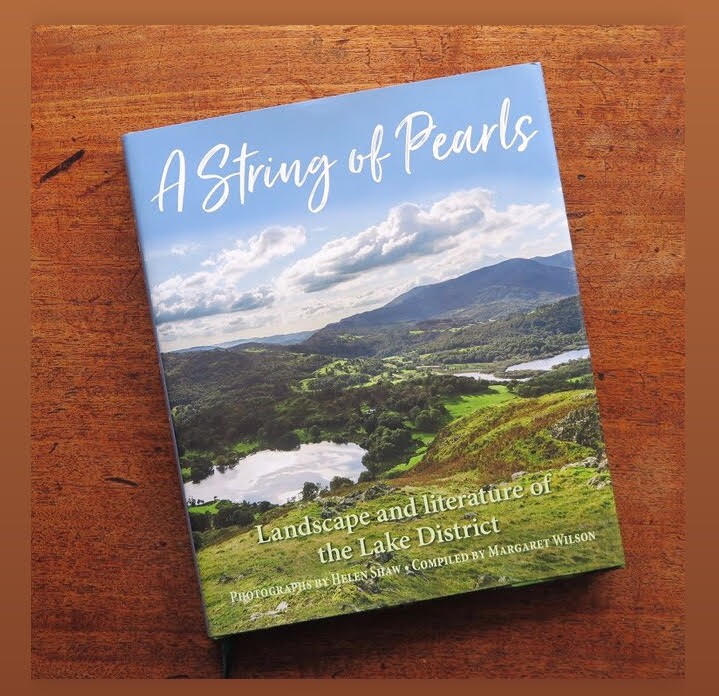How literature and poetry encouraged walking, exploration and appreciation of the Lake District
A String of Pearls – the Literature and Landscape of the Lake District
By Margaret Wilson, photo by Helen Shaw
The relatively small area of the Lake District has seen many visitors over the last 6,000 years or so. Neolithic man produced axes from the hard greenstone of the Langdale Pikes. The Romans built forts at Hardknott and near Ambleside, and the road which gives its name to the High Street ridge. Saxons settled and farmed in the lowlands, then Norsemen arrived to farm the higher hills and started building the dry-stone walls. It is these centuries of forest clearing and farming that have shaped the landscape that we know, also leaving linguistic traces in the local words beck, fell, tarn and force.
Early travellers in the Lakes who recorded their experiences include Celia Fiennes in 1698 and in 1724 Daniel Defoe commented that the country was ‘the wildest, most barren and frightful of any that I have passed through in England’. Poet Thomas Gray visited in 1769 and wrote of his travels and Thomas West wrote the hugely successful Guide to the Lakes in Cumberland, Westmoreland and Lancashire in 1778.
Encouraged by the first proper guidebooks, tourists started to visit the Lakes, but this landscape was initially seen as wild and frightening; visitors were loath to attempt walking in the mountains, that was for sheep farmers and miners. Ann Radcliffe, however, who wrote hugely popular gothic novels, travelled there and climbed the hills then described the experience in extremely flowery language.
William Wordsworth was born in Cockermouth and spent his childhood exploring the hills. He and the other Lakes poets were central to the English Romantic movement and, with Nature as their muse, described the Lakes as wild, but uplifting rather than frightening, which helped alter the way people thought of this dramatic landscape. The Napoleonic wars made the Grand Tour of Europe difficult and increased the appeal of travel through English mountain scenery, helped by a guidebook written by Wordsworth which, to his irritation, was better known then than his poetry. Alfred Wainwright’s beautifully drawn guidebooks have encouraged millions to visit the Lakes but with increased awareness of the toll taken on the landscape leading to greater concern to care for it.
Good writing can always be appreciated, no matter how unfamiliar the setting, but knowing that setting must add to the understanding of it. Wordsworth’s words surely resonate a little more with those who have walked in Gobarrow Park where his daffodils grew, or with those who have ‘made one long bathing of a summer’s day’, or with those who, when the tourists have gone, recognise the ‘November days, when vapours, rolling down the valleys, made a lonely scene more lonesome.’
People who grow up in the area (Wordsworth, Norman Nicholson, James Rebanks) know how lucky they are to do so but those who choose to move there (Robert Southey, Thomas de Quincey, Beatrix Potter, A. Wainwright) also put down deep roots. The huge variation in geology and therefore landscape produces dramatic peaks, fells and waterfalls, valleys, lakes and gentle pastures which inspire these writers to produce a similarly huge variety of literary works.
I hope that the pieces I selected in this book, this collection of gems made into a string of pearls, matched with Helen Shaw’s stunning photographs, will delight those who know the area and inspire those who don’t to explore our beautiful Lake District, which Wordsworth called ‘the loveliest spot that man hath found’.
A String of Pearls – the Literature and Landscape of the Lake District, available from Merlin Unwin Books, and stocked at all good bookshops.

